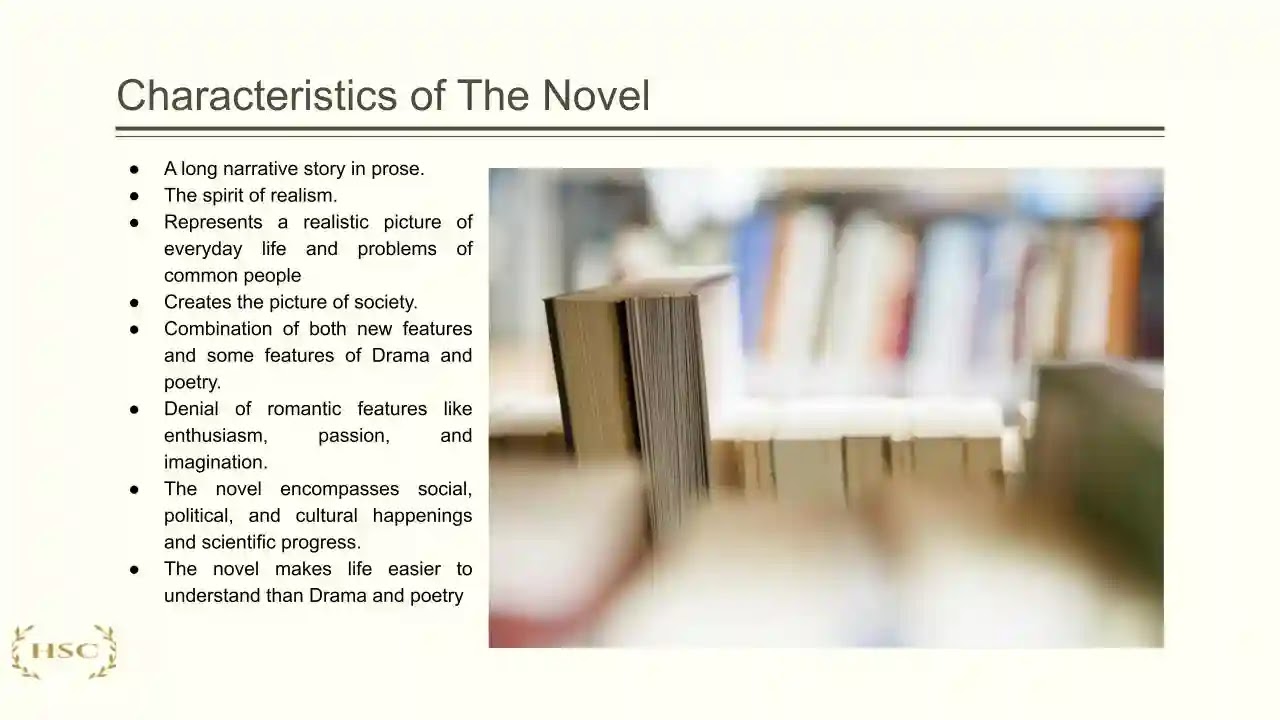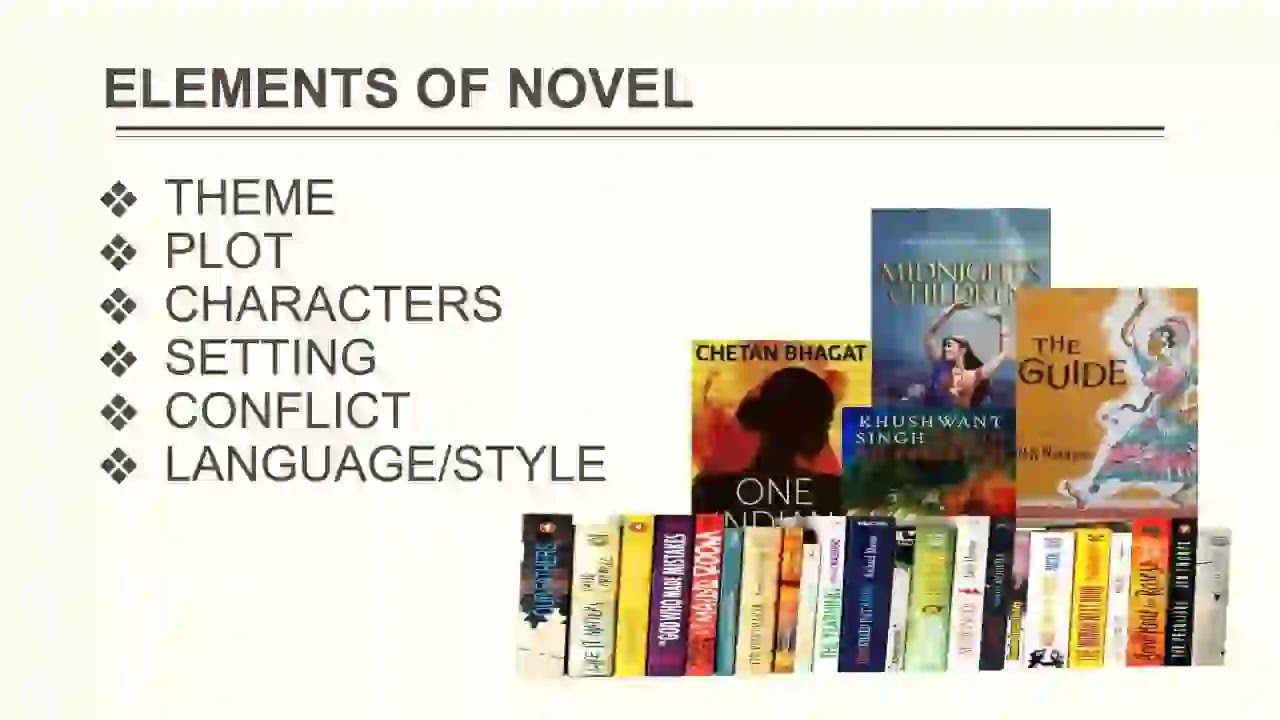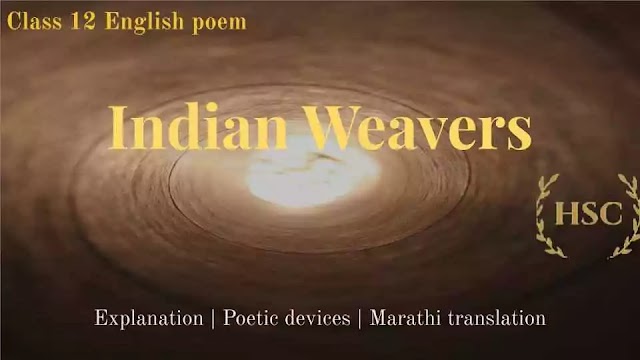4.1 History of the novel
Class 12th English literature
Hello scholars, welcome to the HSC exam guide. The new syllabus for standard 12th has been introduced from the year 2020. In this new syllabus, section 4 is newly introduced with the literary genre, Novel. As the topic is totally new to the students, they find it difficult to deal with it. To make it easier, In this article I have explained a brief summary of the history of the novel, its types, elements and provide notes regarding it,
What is a 'Novel'?
A Novel is the most popular literary genre. A long narrative story that represents human life in prose form is called a novel.
According to Cambridge Dictionary, a novel is “a long printed story about imaginary characters and events.”
Other Topics:
An astrologers Day Summary class 12th
Song of the Open Road Appreciation class 12th
Writing skill: summary writing with example
The Origin of Novel
The 18th century was the period of the Industrial Revolution. During this time trade and commerce had increased. machines had been widely spread in industries. As a result, the new class of people ‘middle class’ emerged. Because of the spread of machines, people could get enough time for entertainment and reading. These new readers had little interest in classic literature like tragedies and romances as they couldn't relate it with themselves. Instead of it, middle-class people were attracted to the newspaper and magazines, which is near to reality.
To fulfill the need of new readers, a new literary genre ‘the novel’ has emerged, which is characterized by the spirit of realism and denial of romantic features like enthusiasm, passion, and imagination. It is a realistic picture of everyday life and the problems of common people. So people appreciate it as respectable reading material.
Drama and poetry were now fading away. The novel has been gaining popularity and growing gradually. It was the prominent form in the eighteenth century and onwards to encompass the social, political, and cultural happenings and scientific progress. Today it is recognized as the most dominant literary genre.
A Brief History of Novel
After 1740 Novel originated as a literary form in England. But the earlier threads of the genre can be found in Virgil’s ‘Eclogues’ or Malory’s ‘Morte D'arthur’ or Geoffrey Chaucer's ‘The Canterbury Tales’. Murasaki Shikibu’s ‘Tale of Genji’(1010) has been described as the world’s first novel.
The European novel is often said to begin with ‘Don Quixote’ by Spanish writer Miguel de Cervantes which was published in two parts between 1605 and1615. The tradition of English novels was followed by many writers. In the end, a list of novelists is given.
20th-century novel :
In the 20th century, innovative techniques and styles were introduced with modern topics. 20th-century novelists widened the circumference of the genre. The novels were written on issues like political, social, psychological, etc.
What is Novella? :
- A Novella, the word originated from the Italian word ‘novelle’
- It is a type of prose fiction which is shorter than a novel but longer than short stories. It is a well-structured yet short narrative, often It's satiric or realistic in tone.
- It focuses on one incident or issue with one or two main characters and takes place in a single tradition.
Elements of the novel
The theme is the central idea expressed in the novel through the characters, setting, events, or actions of the character. In simple words, the theme means the subject of the novel. The novel may have one theme or more than one.
For example
In the chapter 'An Astrologer's Day' the astrologer's appearance expresses the theme of religion as he wore saffron-colored clothes.
Plot
The plot is an arrangement of stories in a particular form to express the theme of the novel. According to W.H Hudson 'plot is the raw material, which is the life of a novel'.
There are two types of plot: 'simple plot' and 'compound or complex plot'.
Simple plot:
A simple plot has only one story and few characters. It is an organic whole.
Compound or complex plot:
As the name suggests it is a little bit complex as compared to a simple plot. Because it consists of one main plot and one or more subplots. It has many characters. Similarly, the plots of the novel are interrelated. That makes it complicated to understand easily.
Characters
It is another important element of the novel. Many aspects differentiate the types of characters.
Firstly, there are ‘flat’ and ‘round’ characters. Flat characters are those who do not change in the course of action. They are also called ‘static’ characters. On the contrary round characters change in the course of the story. So they are called dynamic characters.
Secondly, Characters also can be good or bad. Thirdly, there are ‘major or main’ characters and ‘minor’ characters. The minor characters are not given much importance. Whereas major characters play a vital role.
Finally, ‘the protagonist’ and ‘antagonist’ are other types of characters. The protagonist is the main character of the novel. We can call him a hero of the novel. He conflicts with another character or force that is known as the antagonist.
Setting
Setting means the time, place, and social condition of the story, where it takes place. The setting includes the manners, customs, lifestyle of the people, and the environment of that age.
Conflict
The struggle between the opposite forces in the story is called conflict. There are two types of conflict: internal conflict and external conflict. Internal conflict is found in the minds of characters. On the contrary, external conflict is between two or many people or forces.
Style or language:
Style includes the narrative techniques and the language used by the novelist. He is free to use the artistic and figurative language according to his requirements. Similarly, he can choose any narrative techniques; flashback techniques, or other methods of storytelling. (epistolary, conversation, and stream of consciousness are other techniques of narration.)
Other Topics:
An astrologers Day Summary class 12th
Song of the Open Road Appreciation class 12th
Writing skill: summary writing with example
Types of Novel

Realistic Novel:
The realistic novel depicts the picture of real life with the help of imaginary characters. It shows the spirit of realism. These types of novels highlight social or personal problems or incidents, customs, and ways of thinking of particular social classes. So it is also called a novel of manners. It can be characterized by its complex characters and mixed motives that are rooted in social class.
Picaresque novel
The Picaresque novel gets its name from the Spanish word 'picaro' which means a rogue. It is one of the types of humorous novel. Picaresque novels are in a realistic style. It narrates the adventures of the protagonist who frequently travels from place to place. The story is narrated in episodic form.
Historical novel
A historical novel narrates a story of a significant period of history. with realistic details, it describes the spirit, manners, and social conditions of that time.
Epistolary novel
The epistolary novel is narrated in epistolary technique. The story is told through letters or other documents written by one character or several characters in this technique. Letters are the most commonly used for an epistolary novel, but diary entries are also a popular form of this type of novel.
Gothic novel
The Gothic novels are designed to thrill the readers by giving the description of mystery, horror, thriller, supernatural elements, and death, haunted buildings.
Autobiographical novel
The autobiographical novels are semi-fictional novels based on the life of the author. It may or may not be in first-person narration.
Allegorical novel
Allegorical novels have hidden meanings. The surface meaning of the novel is different from the symbolic one. To convey the message, political, social, historical, or philosophical subjects are symbolized through various symbols.
Utopian or dystopian novel
Utopia portrays how the ideal world should be? However, dystopia is the opposite of utopia which tells about how things have gone wrong in a utopian society. Both themes are found in science fiction.
Psychological novel
In Psychological novels, the internal aspects of the personality are given importance. It is related to the emotions, thoughts, and motives of characters rather than their actions. Thus, in a psychological novel, the novelist tries to reveal the mental mechanism of his characters.
Stream of consciousness
Basically, it is a technique of narration used in the novel. In such novels, a character's thoughts or memories are revealed in a random form. The novelist narrates them as they enter the mind of the character.
Bildungsroman novel
The Bildungsroman novel deals with the psychological and moral growth of the protagonist from childhood to adulthood
Other Topics:
An astrologers Day Summary class 12th
Song of the Open Road Appreciation class 12th
Writing skill: summary writing with example
Brainstorming
(a) Murasaki Shikibu 🠊🠊 Tale of Genji
(c) Don Quixote 🠊🠊 Cervantes
(d) Rajmohan’s Wife 🠊🠊 Bankimchandra Chattopadhyaya
(2) Pick out the odd element from the group.
(i) Arun Joshi, Vikram Seth, Graham Greene, Kiran Nagarkar
Answer: Graham Greene
(ii) Place, Period, Theme, Climate, Lifestyle
Answer: Theme
(iii) Theme, Plot, Character, Novella
Answer: Novella
(3) Complete the following statements:
(i) The two types of conflicts that the plot may have are......................
Answer: Internal conflict and external conflict
(ii) The word ‘picaresque’ is originated from...............
Answer: Spanish word ‘Picaro’
(iii) The epistolary novel presents the narrative through...................................
Answer: Letters
(iv) In the eighteenth-century middle class could get the time for reading and
discussing the novels because...............................
Answer: The spread of Machines.
(4) Write short notes on:
(i) Style of the novel:
Answer: Style includes the narrative techniques and the language used by the novelist. He is free to use the artistic and figurative language according to his requirements. Similarly, there are different types of narrative techniques like epistolary, conversation, and stream of consciousness or flashback technique
(ii) Stream of consciousness novel
Answer: The novels in which the Stream of consciousness narration technique is used are called Stream of consciousness novels. In such novels, a character's thoughts or memories are revealed in a random form. The novelist narrates them as they enter the mind of the character.
(iii) Novella
Answer: A Novella, the word originated from the Italian word ‘novelle’
It is a type of prose fiction which is shorter than a novel but longer than short stories. It is a well-structured yet short narrative, often It's satiric or realistic in tone.
It focuses on one incident or issue with one or two main characters
(iv) Indian tradition of novels.
Answer: Indian tradition of English novels began with Bankim Chandra Chattopadhyaya’s ‘Rajmohan’s Wife’. Mulk raj Anand, R.K. Narayan Raja Rao, and few more novelists have contributed to this tradition. Nationalistic virtues or social issues are their main framework. Female Novelists like Anita Desai, Nayantara Sahgal boost up Indian English novels through their works. In recent years noteworthy contributions have been made by Indian novelists like Salman Rushdie, Arvind Adiga, Arundhati Roy. Thus the tradition of Indian English novels has undergone a vital change since its birth and it undoubtedly has a very bright future.
(Remember it for Question 5A)
Major novelists of the 18th century:
John Bunyan- ‘The Pilgrim’s Progress' (1678)
Aphra Behn -‘Oroonoko’ (1688)
Daniel Defoe - ‘Robinson Crusoe’ (1719), ‘Moll Flanders’ (1722)
Jonathan Swift- ‘Gulliver’s Travels’ - a famous satire (1726)
Samuel Richardson- ‘Pamela, or Virtue Rewarded’ (1740) ‘Clarissa,’ (1748)
(both epistolary novels),
Henry Fielding- 'Joseph Andrews' (1742)
Lawrence Sterne- 'Tristram Shandy' (1759) an Anglo-Irish novelist
Tobias Smollett. ‘The Adventures of Roderick Random’ (1748) ‘The Adventures of Peregrine Pickle’ (1751) (both are picaresque novels. He was a Scottish Satirical Novelist)
Charles Dickens- 'Oliver Twist' (1838)
Walter Scott- 'Ivanhoe'(1820) (historical Novel)
Nathaniel Hawthorne- 'The Scarlet Letter'(1850)
Horace Walpole- 'The Castle of Otranto ' (1764), (The first Gothic novel in English literature)
Thomas Hardy- 'The Mayor of Casterbridge' (1886)
Wilkie Collins- 'The Moonstone' (1868) (detective novel)
H.G.Wells.- 'The Time Machine' (a science fiction)
20th-Century Novel :
In the 20th century, innovative techniques and styles were introduced with modern topics. 20th-century novelists widened the circumference of the genre. The novels were written on issues like political, social, psychological, etc.
The Contribution of Women Novelists:
Frances Burney- ‘Evelina or The History of a Young Lady's Entrance into the World’ (1778)
Ann Radcliffe- The Mysteries of Udolpho (1794) (Gothic novels).
Mary Shelley -‘Frankenstein’ (1818) (science fiction)
Jane Austen- 'Pride and Prejudice' (1813) (novel of manners)
Emily Bronte- ‘Wuthering Heights’
Charlotte Bronte- 'Jane Eyre'
Ann Bronte- 'The Tenant of Wildfell Hall'
George Eliot- 'Adam Bede' (1859)
Virginia Woolf - To the Lighthouse (1927)
(Virginia Woolf: the pioneer of the Stream of Consciousness technique in English novel)
Toni Morrison- The Bluest Eye (1970)
Alice Walker- Meridian (1976)
Indian Novelist
Mulk raj Anand- “Untouchable” (1935) “Coolie” (1936)
R.K. Narayan- 'The Guide' (1958)
Raja Rao- 'Kanthapura' (1938)
Anita Desai- 'The Peacock Garden' (1974)
Nayantara Sahgal- 'Mistaken Identity' (1988)
Arun Joshi- 'The Last Labyrinth' (1982)
Manohar Malgaonkar- 'Shalimar' (1978)
Amitav Ghosh- 'The Shadow Lines' ( The Sahitya Akademi Award-winning novel)
Vikram Seth- 'The Golden Gate' (1986)
Upamanyu Chatterjee- 'The last Burden' (1993)
Salman Rushdie- 'Midnight's Children'
Arvind Adiga- 'The White Tiger'
Arundhati Roy- 'The God of Small things'
Kiran Desai- 'The Inheritance of Loss' (2006)
Kiran Nagarkar- 'Cuckold' (1997)
Famous novellas in English
• ‘The Heart of Darkness by Joseph Conrad
• ‘The Turn of the Screw’ by Henry James
• ‘Billy Budd’ by Hermann Melville
• ‘Death in Venice’ by Thomas Mann
• ‘Seize The Day by Saul Bellow
• ‘Pearl’ by John Steinbeck
So students I hope you have understood the topic clearly. I have tried my best to explain it in an easy and simple way. If you still have any questions write in the comment box. I will answer. If you like this topic do share it with your friends and follow us for the latest update.
Other Topics:
An astrologers Day Summary class 12th
Song of the Open Road Appreciation class 12th
Writing skill: summary writing with example

















3 Comments
Very simple and thoughtful
ReplyDeleteexplanation Madam.
Thank you.
DeleteThank you so much for helping ma'am
ReplyDelete